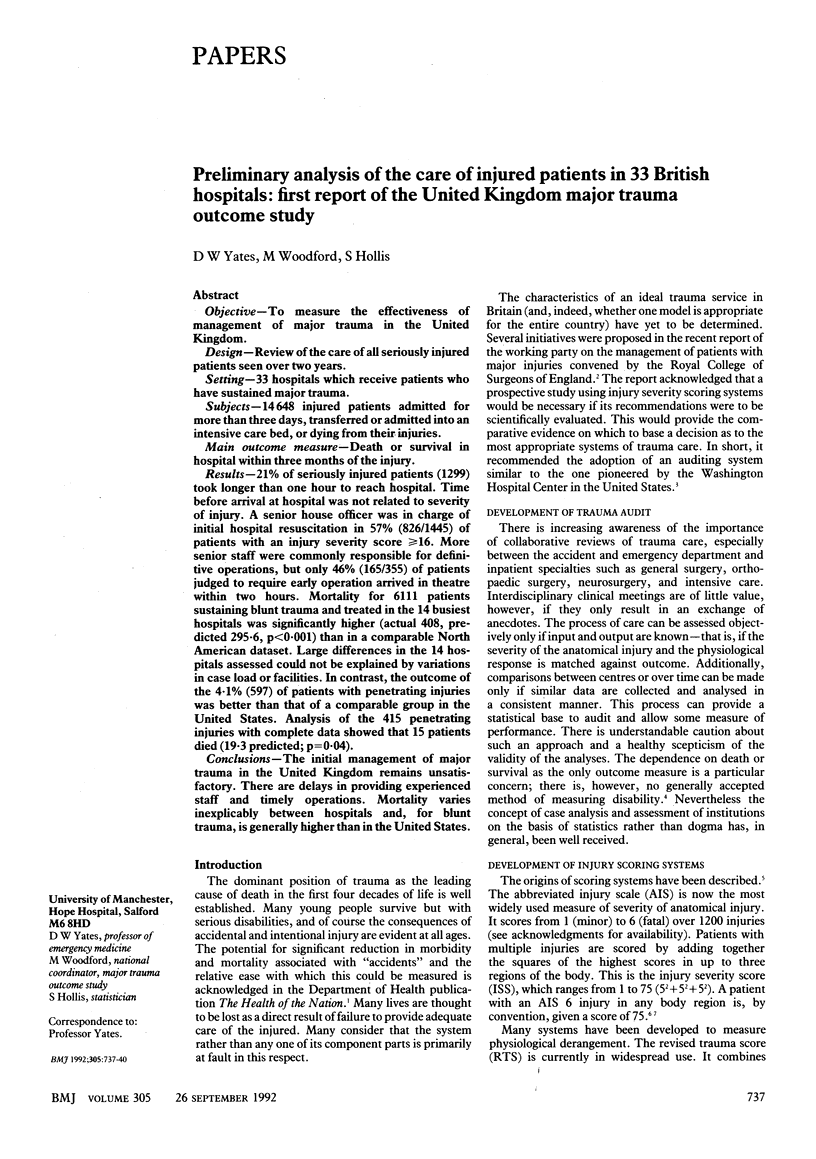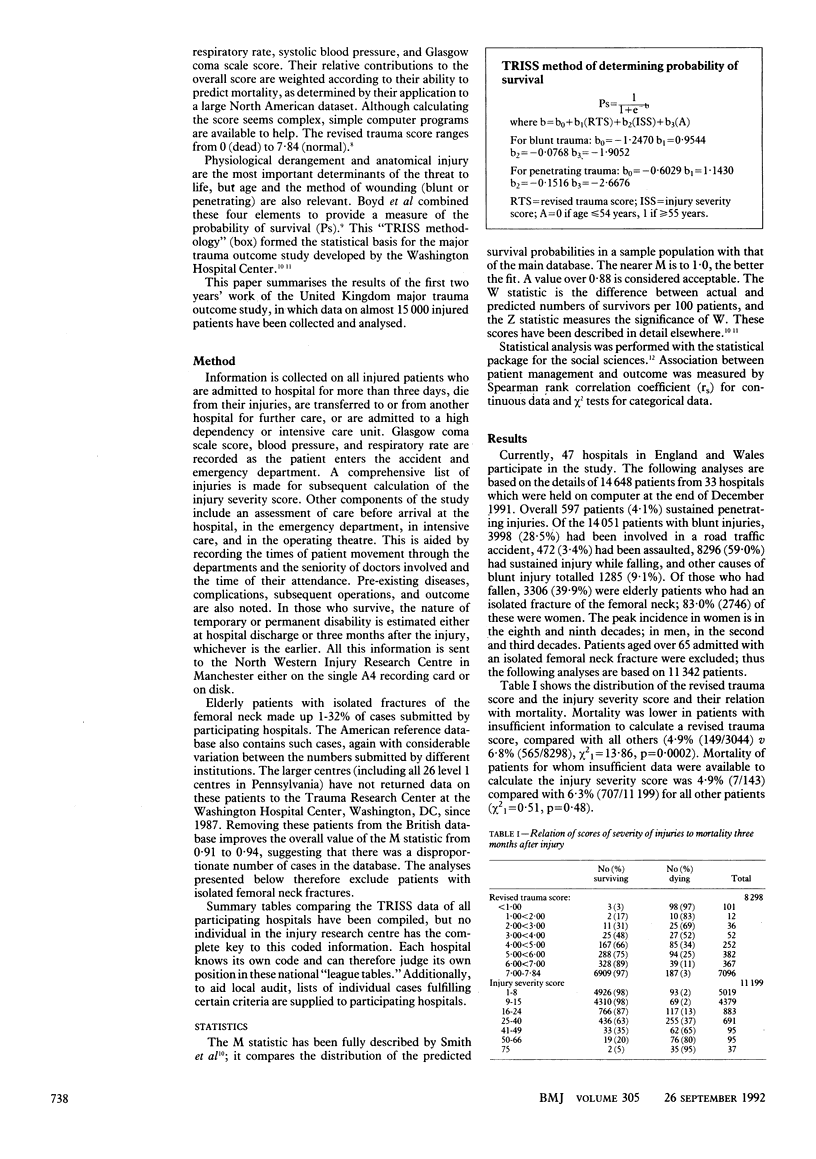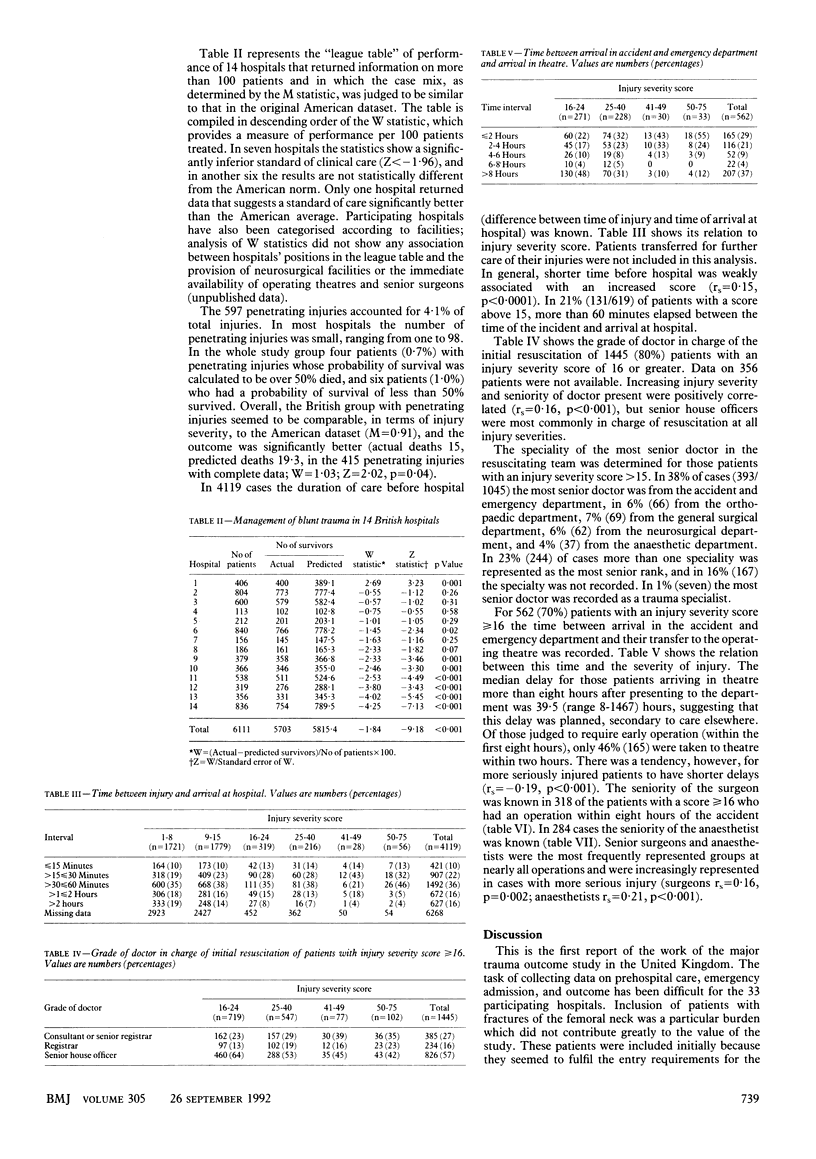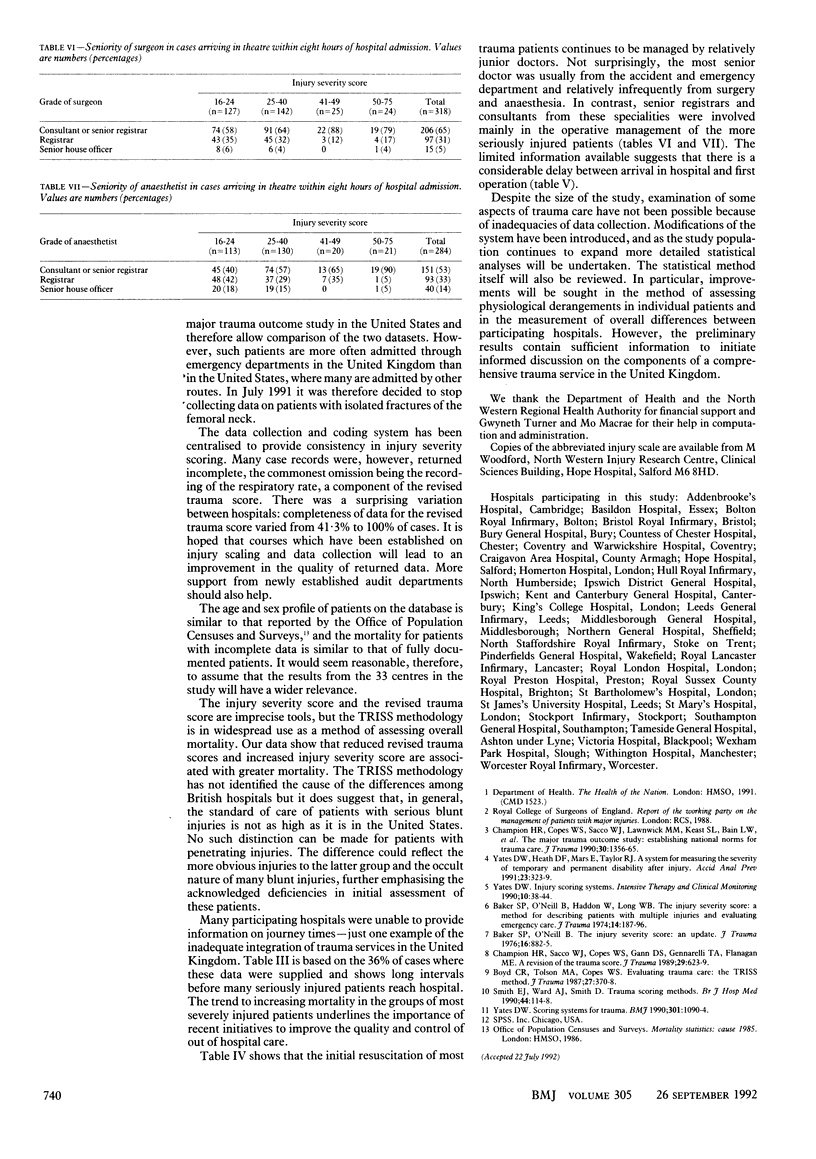Abstract
OBJECTIVE--To measure the effectiveness of management of major trauma in the United Kingdom. DESIGN--Review of the care of all seriously injured patients seen over two years. SETTING--33 hospitals which receive patients who have sustained major trauma. SUBJECTS--14,648 injured patients admitted for more than three days, transferred or admitted into an intensive care bed, or dying from their injuries. MAIN OUTCOME MEASURE--Death or survival in hospital within three months of the injury. RESULTS--21% of seriously injured patients (1299) took longer than one hour to reach hospital. Time before arrival at hospital was not related to severity of injury. A senior house officer was in charge of initial hospital resuscitation in 57% (826/1445) of patients with an injury severity score > or = 16. More senior staff were commonly responsible for definitive operations, but only 46% (165/355) of patients judged to require early operation arrived in theatre within two hours. Mortality for 6111 patients sustaining blunt trauma and treated in the 14 busiest hospitals was significantly higher (actual 408, predicted 295.6, p < 0.001) than in a comparable North American dataset. Large differences in the 14 hospitals assessed could not be explained by variations in case load or facilities. In contrast, the outcome of the 4.1% (597) of patients with penetrating injuries was better than that of a comparable group in the United States. Analysis of the 415 penetrating injuries with complete data showed that 15 patients died (19.3 predicted; p = 0.04). CONCLUSIONS--The initial management of major trauma in the United Kingdom remains unsatisfactory. There are delays in providing experienced staff and timely operations. Mortality varies inexplicably between hospitals and, for blunt trauma, is generally higher than in the United States.
Full text
PDF



Selected References
These references are in PubMed. This may not be the complete list of references from this article.
- Baker S. P., O'Neill B., Haddon W., Jr, Long W. B. The injury severity score: a method for describing patients with multiple injuries and evaluating emergency care. J Trauma. 1974 Mar;14(3):187–196. [PubMed] [Google Scholar]
- Baker S. P., O'Neill B. The injury severity score: an update. J Trauma. 1976 Nov;16(11):882–885. doi: 10.1097/00005373-197611000-00006. [DOI] [PubMed] [Google Scholar]
- Boyd C. R., Tolson M. A., Copes W. S. Evaluating trauma care: the TRISS method. Trauma Score and the Injury Severity Score. J Trauma. 1987 Apr;27(4):370–378. [PubMed] [Google Scholar]
- Champion H. R., Copes W. S., Sacco W. J., Lawnick M. M., Keast S. L., Bain L. W., Jr, Flanagan M. E., Frey C. F. The Major Trauma Outcome Study: establishing national norms for trauma care. J Trauma. 1990 Nov;30(11):1356–1365. [PubMed] [Google Scholar]
- Champion H. R., Sacco W. J., Copes W. S., Gann D. S., Gennarelli T. A., Flanagan M. E. A revision of the Trauma Score. J Trauma. 1989 May;29(5):623–629. doi: 10.1097/00005373-198905000-00017. [DOI] [PubMed] [Google Scholar]
- Smith E. J., Ward A. J., Smith D. Trauma scoring methods. Br J Hosp Med. 1990 Aug;44(2):114–118. [PubMed] [Google Scholar]
- Yates D. W. ABC of major trauma. Scoring systems for trauma. BMJ. 1990 Nov 10;301(6760):1090–1094. doi: 10.1136/bmj.301.6760.1090. [DOI] [PMC free article] [PubMed] [Google Scholar]
- Yates D. W., Heath D. F., Mars E., Taylor R. J. A system for measuring the severity of temporary and permanent disability after injury. Accid Anal Prev. 1991 Aug;23(4):323–329. doi: 10.1016/0001-4575(91)90010-3. [DOI] [PubMed] [Google Scholar]


